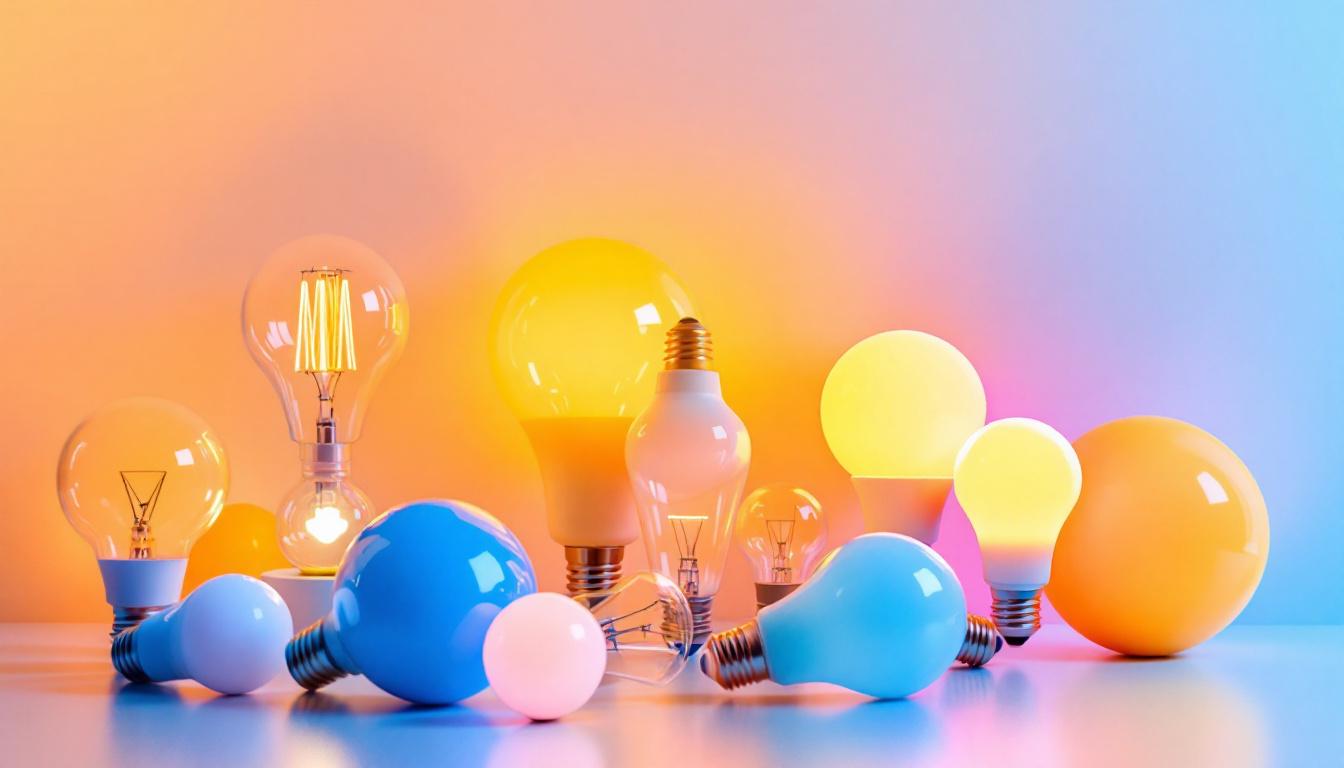
The industrial grow sector is rapidly evolving, and lighting contractors play a pivotal role in ensuring that indoor agricultural facilities are equipped with the most efficient and effective lighting solutions. As the demand for high-quality produce increases, so does the need for advanced lighting technologies and practices. This article aims to provide lighting contractors with essential resources and insights to enhance their expertise in the industrial grow lighting landscape.
Lighting is not merely a functional necessity in industrial grow operations; it is a critical factor that influences plant growth, yield, and quality. The right lighting system can significantly enhance photosynthesis, leading to healthier plants and increased production. Understanding how different lighting technologies affect plant growth is essential for contractors aiming to provide optimal solutions for their clients.
Plants utilize light for photosynthesis, a process that converts light energy into chemical energy. The spectrum of light, including the wavelengths emitted by various lighting technologies, plays a crucial role in this process. For instance, blue light promotes vegetative growth, while red light encourages flowering and fruiting. By comprehending these nuances, lighting contractors can recommend appropriate lighting systems tailored to specific plant needs. Additionally, the intensity and duration of light exposure are vital factors; plants require different light cycles to thrive, such as the 18-hour light cycle for vegetative growth and a 12-hour cycle for flowering. This understanding allows contractors to design lighting schedules that align with the natural growth patterns of the plants, optimizing their health and productivity.
Several lighting technologies are prevalent in industrial grow operations, each with its unique advantages and disadvantages. High-Intensity Discharge (HID) lights, such as Metal Halide (MH) and High-Pressure Sodium (HPS), have been traditional choices due to their high output and efficiency. However, Light Emitting Diodes (LEDs) are gaining popularity for their energy efficiency, long lifespan, and customizable spectrum capabilities. Understanding these technologies is crucial for contractors to make informed recommendations. Moreover, advancements in lighting technology have led to the development of full-spectrum LEDs, which can mimic natural sunlight and provide a balanced light spectrum that supports all stages of plant growth. This versatility not only enhances plant health but also reduces energy costs, making it an attractive option for growers looking to maximize their return on investment. Furthermore, the integration of smart lighting systems, which can be controlled remotely and adjusted based on real-time data, is revolutionizing the way growers manage their lighting needs, ensuring that plants receive the optimal light conditions at all times.
To excel in the industrial grow lighting sector, contractors must leverage a variety of resources. These resources can range from educational materials to industry-specific tools and software that enhance decision-making processes. Below are some of the most valuable resources available to lighting contractors.
Joining industry associations can provide contractors with access to a wealth of knowledge, networking opportunities, and best practices. Organizations such as the Illuminating Engineering Society (IES) and the American Society of Agricultural and Biological Engineers (ASABE) offer valuable resources, including research papers, guidelines, and certification programs. These associations also host conferences and seminars that can help contractors stay updated on the latest trends and technologies in grow lighting. Additionally, being part of these organizations can foster collaboration among peers, allowing contractors to share experiences, challenges, and solutions that can lead to improved practices in the field.
Numerous online platforms offer courses and webinars tailored to the needs of lighting contractors. Websites like Coursera, Udemy, and LinkedIn Learning feature courses on horticultural lighting, energy efficiency, and advanced lighting design. Engaging with these educational resources can help contractors deepen their understanding of the science behind lighting and its application in industrial grow operations. Furthermore, many of these platforms provide access to industry experts who can offer insights and real-world applications of theoretical knowledge, making the learning experience more practical and relevant. This continuous education can empower contractors to implement innovative lighting solutions that optimize plant growth and energy consumption.
Lighting manufacturers often provide extensive resources for contractors, including product specifications, installation guides, and technical support. Many manufacturers also offer training sessions and workshops to help contractors understand their products better. By establishing strong relationships with manufacturers, contractors can gain insights into the latest innovations and receive support when troubleshooting lighting issues. Additionally, manufacturers may provide access to proprietary software that assists in designing lighting layouts tailored to specific grow environments, ensuring that contractors can maximize efficiency and effectiveness in their installations. This partnership can also lead to exclusive opportunities for early access to new products and technologies, giving contractors a competitive edge in the rapidly evolving grow lighting market.
Designing an effective lighting system for industrial grow operations requires a comprehensive understanding of various factors, including plant types, growth stages, and facility layout. Contractors must be adept at creating customized solutions that meet the unique needs of each grow operation.
A thorough lighting assessment is the first step in designing an effective lighting system. This assessment involves evaluating the existing lighting setup, measuring light intensity and distribution, and analyzing plant growth patterns. By gathering this data, contractors can identify areas for improvement and recommend suitable lighting solutions that enhance plant growth and energy efficiency.
Lighting design software can be an invaluable tool for contractors. Programs such as DIALux and AGi32 allow contractors to simulate lighting scenarios, assess light distribution, and optimize layouts. These tools enable contractors to visualize the impact of different lighting configurations, ensuring that the final design meets both the aesthetic and functional requirements of the grow operation.
As the focus on sustainability intensifies, energy efficiency has become a paramount consideration for lighting contractors in the industrial grow sector. Implementing energy-efficient lighting solutions not only reduces operational costs but also minimizes the environmental impact of grow operations.
LED technology stands out as one of the most energy-efficient options available for industrial grow lighting. Compared to traditional HID lights, LEDs consume significantly less energy while providing comparable or superior light output. Additionally, LEDs have a longer lifespan, reducing the frequency of replacements and associated waste. Contractors should be well-versed in the benefits of LED technology to advocate for its adoption among their clients.
Smart lighting solutions, which incorporate sensors and automation, can further enhance energy efficiency in grow operations. These systems can adjust light intensity based on environmental conditions, ensuring that plants receive the optimal amount of light while minimizing energy consumption. Contractors should consider integrating smart technology into their lighting designs to provide clients with cutting-edge solutions that align with sustainability goals.
The industrial grow lighting landscape is continually evolving, driven by advancements in technology and changing market demands. To remain competitive, lighting contractors must stay informed about emerging trends and innovations that could impact their work.
New technologies, such as quantum dot LEDs and organic LEDs (OLEDs), are being developed to enhance the efficiency and effectiveness of grow lighting. Quantum dot LEDs offer the potential for tunable light spectra, allowing for precise control over the wavelengths emitted. Similarly, OLEDs provide a flexible and lightweight alternative for lighting applications. Contractors should keep an eye on these developments to assess their potential applications in industrial grow operations.
Understanding market trends and consumer preferences is crucial for lighting contractors. As more consumers seek sustainably produced food, there is an increasing demand for energy-efficient and environmentally friendly grow lighting solutions. Contractors should be proactive in educating clients about the benefits of sustainable lighting options and how they align with consumer preferences.
Building a strong professional network is essential for lighting contractors in the industrial grow sector. Collaborating with other professionals, including growers, engineers, and researchers, can lead to valuable insights and opportunities for growth.
Attending industry events, such as trade shows and conferences, can provide contractors with opportunities to connect with peers and industry leaders. These events often feature workshops and presentations on the latest trends and technologies, allowing contractors to expand their knowledge and network. Engaging with others in the field can lead to partnerships that enhance service offerings and drive innovation.
Online forums and communities dedicated to horticultural lighting can serve as valuable platforms for knowledge sharing and collaboration. Participating in discussions, asking questions, and sharing experiences can help contractors stay informed about industry developments and best practices. Engaging with a community of like-minded professionals fosters a culture of learning and growth.
Mastering the intricacies of industrial grow lighting is essential for lighting contractors aiming to succeed in this dynamic sector. By leveraging key resources, understanding the science behind plant growth, and staying informed about industry trends, contractors can provide exceptional service and solutions to their clients. As the demand for efficient and sustainable lighting solutions continues to rise, those who invest in their knowledge and skills will undoubtedly thrive in the evolving landscape of industrial grow operations.
As you strive to master the complexities of industrial grow lighting, remember that the right partner can illuminate the path to success. At LumenWholesale, we provide lighting contractors with spec-grade lighting products that meet the highest industry standards. Our commitment to quality, affordability, and convenience ensures that you have access to the best lighting solutions for your projects. Embrace the future of grow lighting with confidence and make your next purchase count. Discover the value of wholesale lighting without the markup and enjoy free shipping on bulk orders. Wholesale Lighting at the Best Value is just a click away.

Discover the benefits of LED light globes in our comprehensive guide to energy-efficient lighting.

Discover the top strategies lighting contractors use with 3-way toggle switches to enhance functionality and aesthetics in residential and commercial spaces.

Discover the significance of the A-19 bulb for lighting contractors in this insightful article.

Discover how the toggle single pole switch is revolutionizing the lighting industry, offering contractors enhanced efficiency and simplicity.